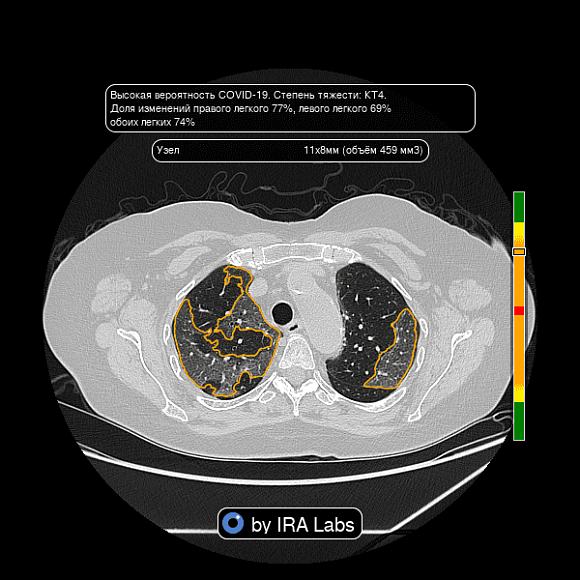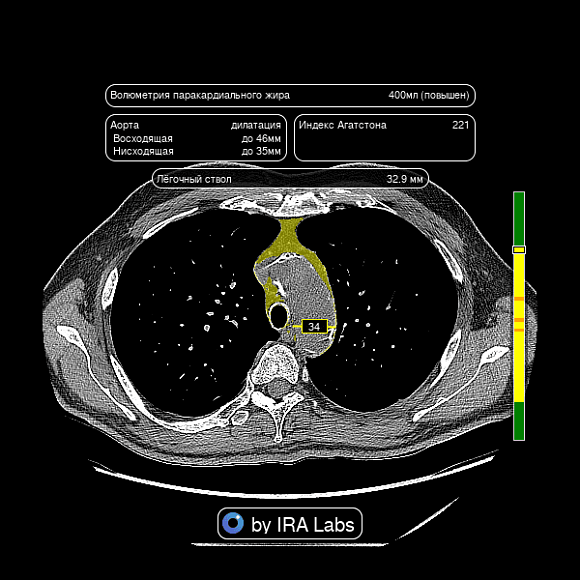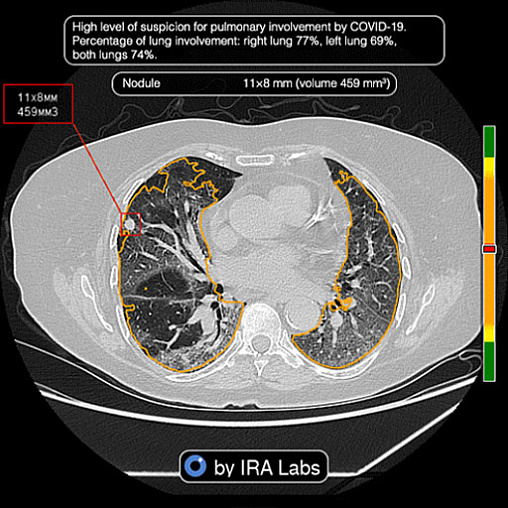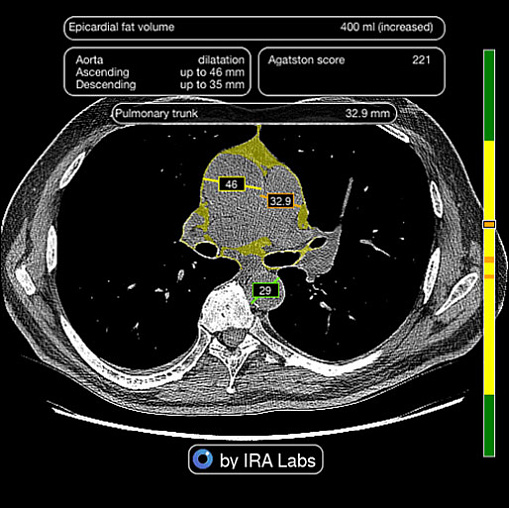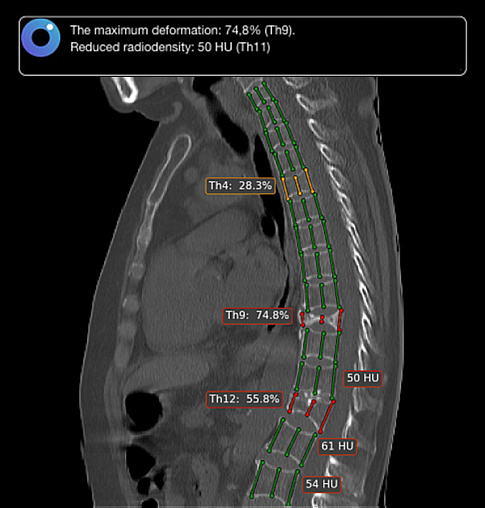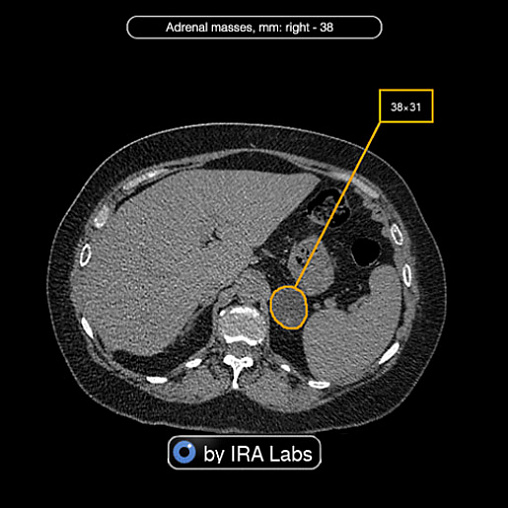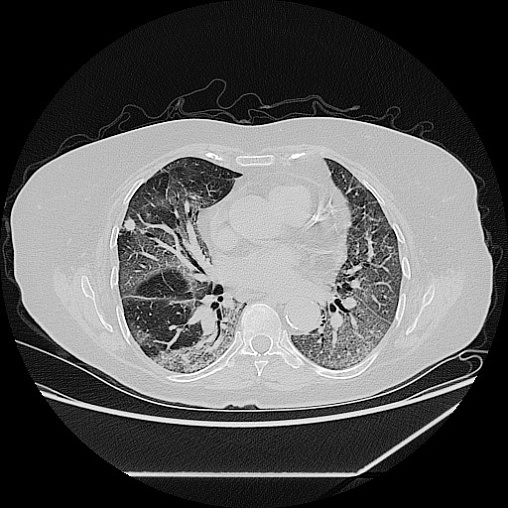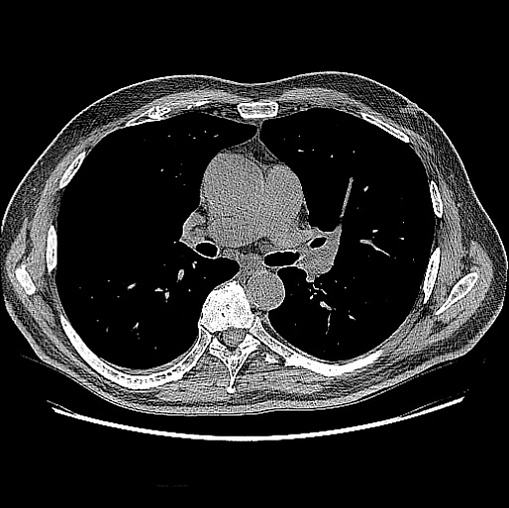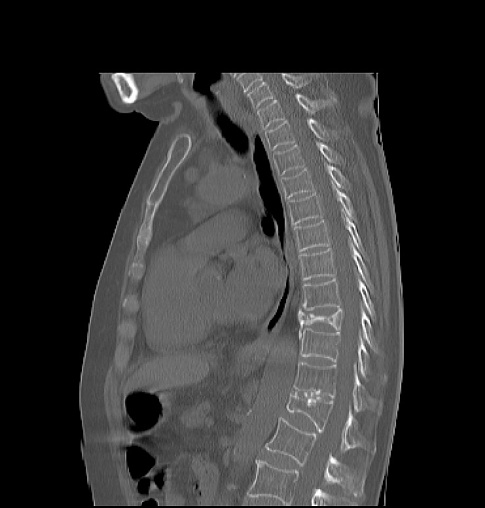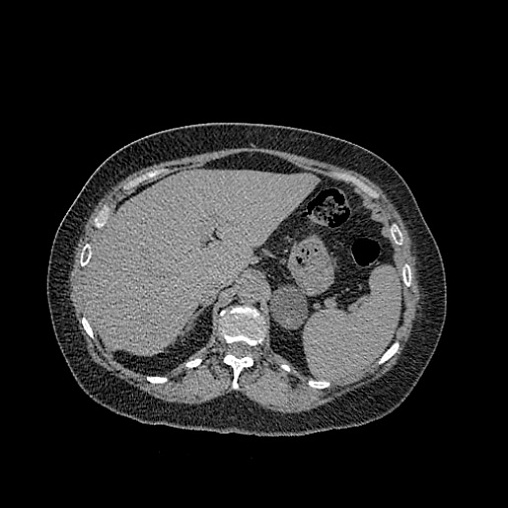AI devoted to the radiologist

window

window

window
Our vision and values
The number of scans increases every year, leading to the radiologists' burden growth, thus affecting the quality of diagnosis.
IRA Labs enhances the work environment
and quality of diagnostics
Minimize the risk of the errors,
Reduce analysis time,
Our solution
Identification and visualization of pathologies
Automated scoring and classification
Generation of radiology reports
Intuitive
interface
Chest-IRA -
chest CT scans complex analysis
Why IRA Labs?
Complex approach
We analyze all the organs presented in the scan, which helps the radiologist and clinician get a complete picture of the patient's condition without missing anything, cope with the routine faster, and focus at once on differential diagnosis.High-quality algorithms
A strong and dedicated development team of algorithmic scientists, consisting of graduates of the Moscow Institute of Physics and Technology and Skoltech. A team of expert radiologists participates in the training of each algorithm. All modules go through several stages of testing and are constantly being improved.Leader in Moscow AI experiment
Since 2020 Moscow's healthcare departments have experimented with innovative computer vision technology for medical image analysis with the participation of 21 companies (including international). Currently, IRA Labs is the leader in terms of quality and quantity of products:- COVID-19 - ROC AUC 0.98
- Pulmonary nodes - ROC AUC 0.93
- Aortic aneurysms - ROC AUC 0.99
- Coronary artery calcification - ROC AUC 0.98
- Pericardial/epicardial fat - ROC AUC 0.99
- Osteoporosis - ROC AUC 0.99
Compliance with clinical practice guidelines
Our product speaks the same language as a doctor: we build an interpretable result following international clinical guidelines for each finding.
At IRA LABs, we are deeply committed to advancing technology while upholding our responsibility to the environment. In our latest initiative, we've successfully optimized our AI screening system to significantly reduce its computing power requirements. This strategic enhancement not only bolsters system efficiency but also substantially lowers our carbon footprint. By integrating these sustainable practices, we're not just improving our operations; we're contributing to a healthier planet for future generations.

Advanced scientific results
The product is built based on cutting-edge scientific results obtained in collaboration with the Skolkovo Institute of Science and Technology.
«We strive to provide the best quality of algorithms and doctors' convenience to benefit the highest quality patient diagnostics»
Victor Gombolevskiy,
PhD, radiologist
Business Development Advisor
We are IRA Labs
To create a high-quality service that will become an indispensable assistant to a radiologist. We strive for artificial intelligence to take over routine measurements, help identify the underlying disease and comorbidities, to ensure the highest quality of diagnosis.
A Passionate Team
Author of 250+ scientific papers, h-index 22.
Member of multiple Russian and international professional societies
Radiologist with over 16 years of experience.
Expert in CT and MRI diagnostics. Member of the European Society of Radiology (ESR).
PhD, radiologist with over 14 years of experience.
Expert in abdominal imaging. Member of the European Society of Radiology (ESR) and the scientific committee of the European Society of Medical Imaging Informatics (EuSoMII).


